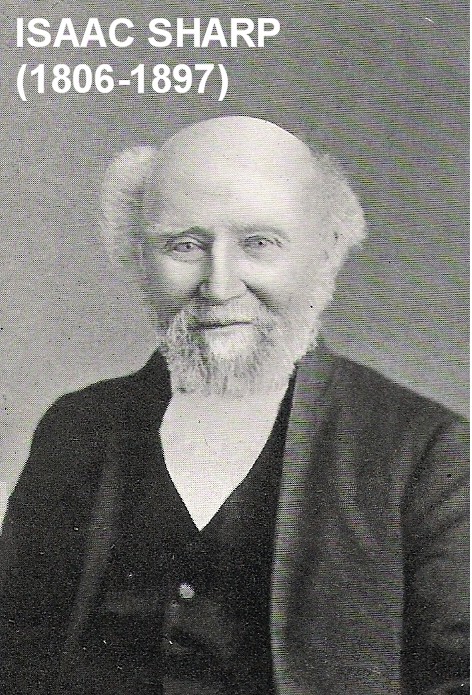Isaac Sharp (1806-1897) and Asbjørn Kloster (1823-1876)
Isaac Sharp and Asbjørn Kloster were members of 'The Society of Friends' better known as 'Quakers'.
Isaac Sharp was a minister and preacher who in the later years of his life travelled around the world. His story is told in the book 'Isaac Sharp Apostle of the 19th century' written by Frances Anne Budge (1898)
Asbjørn Kloster is known for his work with the total abstinance society which he founded in Stavangar in 1859. A statue in Stavangar commemorates his work with the society.
Early Quakers and their beliefs.
Followers of George Fox (1624-1691)
Upheld the authority of scripture
Believed in ‘inner light’.
Necessary to follow the leading of the Holy Spirit.
Opposed the paying of tithes; giving of titles; rejected religious rituals including the need for water baptism; maintained that God dwells in people not in buildings..
Would not swear oaths.
George Fox is buried in the graveyard at Bunhill Fields, London.
Quakerism today
19th century shift away from Evangelicalism focusing on social concerns.
General position now is that it no longer upholds the authority of scripture.
Maintains emphasis upon the inner voice.
Isaac Sharp first visited the Faroe Islands with Asbjorn Kloster in 1861.
They sailed from Grangemouth to Torshavn.
Onboard ship was the minister of the church from Sandur who they met again on April 25th, 1862.
Isaac Sharp mentions in his journal April 24th, 1862 that they used the ‘Thing House’ (Parliament house) in Torshavn for a Sunday meeting on their first visit.
ISAAC SHARP’S VISIT TO THE FAROE ISLANDS (April – June 1862).
Method of meeting.
Isaac Sharp and Asbjorn Kloster did not plan their meetings.
They arranged the meetings without making any program.
They gathered together in silence.
Then the meeting would proceed as the Holy Spirit led.
They would let the Holy Spirit direct their thoughts.
If it was right to speak they did so.
They waited for guidance to speak on the right message.
Sometimes they felt great freedom where the Lord ‘owned the meeting’.
Other times there was a heaviness that made the meeting difficult.
Place of meetings
Meetings mostly took place in the large room in the house called the ‘Rogstue’ (Danish) or ‘Roykstova’ (Faroese).
In Torshavn meetings took place in the Thing House (Hall of Justice).
In Eidi a meeting took place in a new warehouse.
On occasions a meeting took place in the Lutheran Church.
Expenses.
The expenses for the mission to Faroes were covered by 'The Society of Friends' under 'The Yearly Meeting Fund' (formerly National Stock) and central funds. Collections of money “for the service of truth”, at first for support of travelling ministers, and for printing, were made up and down the country in the 1650’s; the Kendal Fund is the best known of these.
The cost of the mission can be found in the ledger. Two payments were made to Isaac Sharp. One for £100 which was given prior to departure and one later payment of over £11-13s 11d. Therefore we can presume the entire cost amounted to £111-13s 11d.
Ledger
1862 4 April £100
1863 2 January £11-13s 11d

